For every competitive massively multiplayer video game, a ranking system is vital. If a game has good matchmaking, players’ overall enjoyment would rise higher, as everyone would have their chances to win against enemies on the same skill bracket. On the other hand, if a game has an inadequate matchmaking system, it would be disastrous – weaker players would get stomped and skilled players would get bored. However, Dota 2's player count still decreases gradually over time due to other factors.

The Dota 2 rank system is probably amongst the biggest reason that players migrated to it from Dota 1. In combination with Dota 2 leaderboards and Dota 2 rank MMR brackets, Valve has ensured the quality of both ranked and unranked matches – part of the reason Dota 2 has been growing strong for almost ten years now.
In this article, we would be going through some of the more intricate details in the Dota 2 leaderboards MMR system. For more video games related posts, please check out the main Gurugamer page.
1 - Matchmaking rating of Dota 2 Rank System
MMR or Matchmaking rating is a numerical value that determines a player’s skill level. This value is used in Dota 2 rank system Matchmaking – players would gain MMR with victories and lose MMR with defeats.
Unranked matchmaking uses a hidden rank value while Ranked matchmaking uses the official. Players would earn medals based on their ranks and the highest ranks would be listed on the world’s Dota 2 leaderboards.
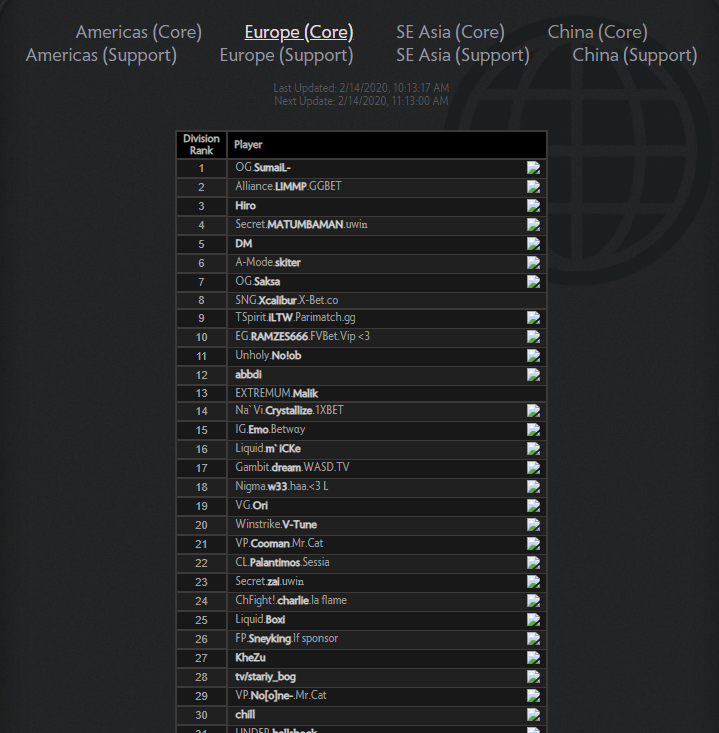
2 – Separated role MMRs
In short, players with similar MMR values would be matched into each other, there would be four separate matchmaking ratings, based on the role and the section selected by players. However, they still influence each other to a degree – you would not be able to get 5000 core MMR while having 1 support MMR.
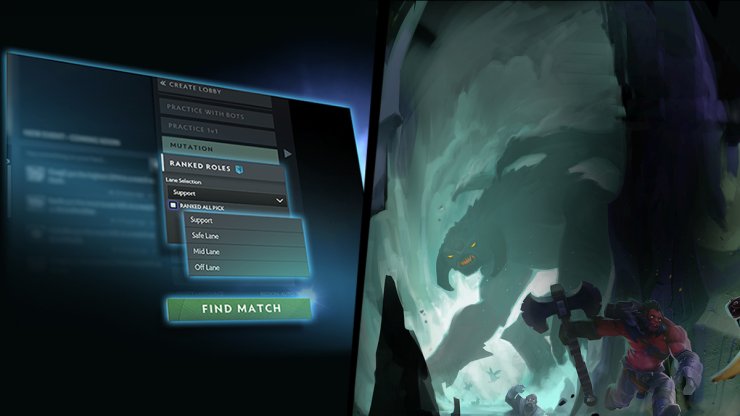
To play ranked, players need their account verified using a mobile number, Dota 2 profile past a certain level and 10 more games to calibrate initial standing. Regional top 200 players of solo ranked would get their name posted on the Dota 2 leaderboards.
MMR does not involve in training matches and bot games. Speaking about Bot games, Dota Underlord has finally been released officially.
3 – Dota 2 rank MMR distribution estimates
Below is an overall graph for MMR distribution in Dota 2, February 2020 version.
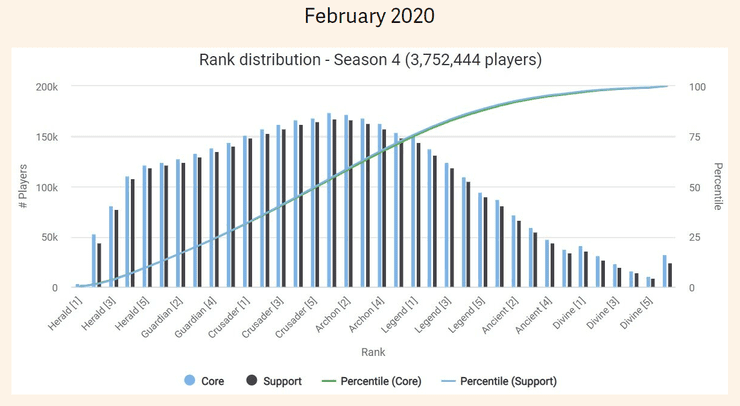
Based on those stats, the average Dota 2 player would be a Crusader 5, while the directly above rank, Legend 1, is much harder to get.
Just a super tiny part of the player base reached the Dota 2 leaderboards’ top ranks, with the top 10% of the total player base spread from Ancient 1 to Immortal. Divine rank would be the top three percent, with above Divine 5 being only 0.7 percent. That’s why pro players are just small elite groups – they constantly have to endure long matchmaking and bad teammates.
4 – Uncertainty factor in Dota 2 Rank system
This is what separated new accounts from older ones. Uncertainty is a hidden factor that serves as MMR’s standard deviation. High uncertainty value accounts are more likely to be matched with players who have a different skill level – and low uncertainty accounts are the opposite.
Overall, the more games you play, the lower this value would get. Games that have unexpected outcomes would increase the uncertainty level of an account – this is a “prevent” mechanic to combat against account boosting.
5 – Party MMR
Overall, when you are in a Dota 2 Rank Team, your whole party would gain extra MMR value when searching for matches. This is somewhat a compensation for higher coordination and skilled members.
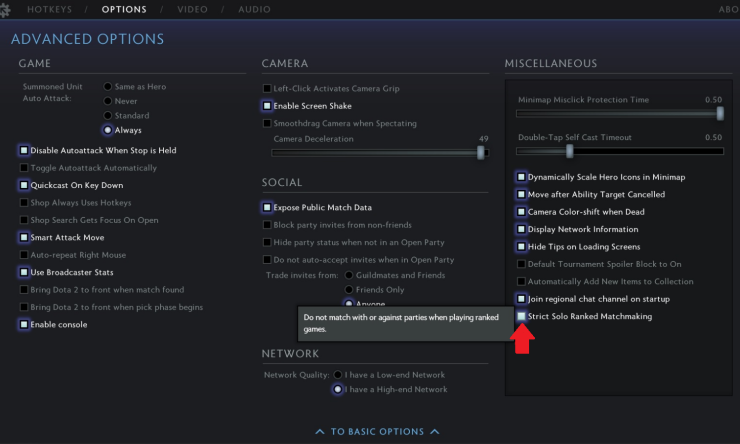
The experience and skill values of players in a party would get calculated together instead of separately. Beside the gained MMR value for being in a party, players would also gain more MMR if one person in the party is much higher than the rest. Solo MMR also gets accounted for in Party games as well, with extra MMR values for people with a solo rank higher than party rank.
In short, the Dota 2 rank team system is like this: If a 5k player partied with a 3k player, chances that they are getting two 4k2-4k5 players instead of a 4k player.s
6 – Gain/Loss in MMR
Solo queue games would change MMR by instances of 30 while Party queue games would be 20.
MMR would not be modified if an early abandon was made by a non-party member or poor network conditions.
MMR would be modified if any member of your party abandons or any player on your team late abandon.
7 – Visibility and other information; Dota 2 Leaderboards
Ranked MMR is visible to its owner only while Unranked MMR is not visible at all. While Dota 2 Ranked MMR is the principal factor, it is not the only element that was used in the matchmaking system. For more information, please check out this post.
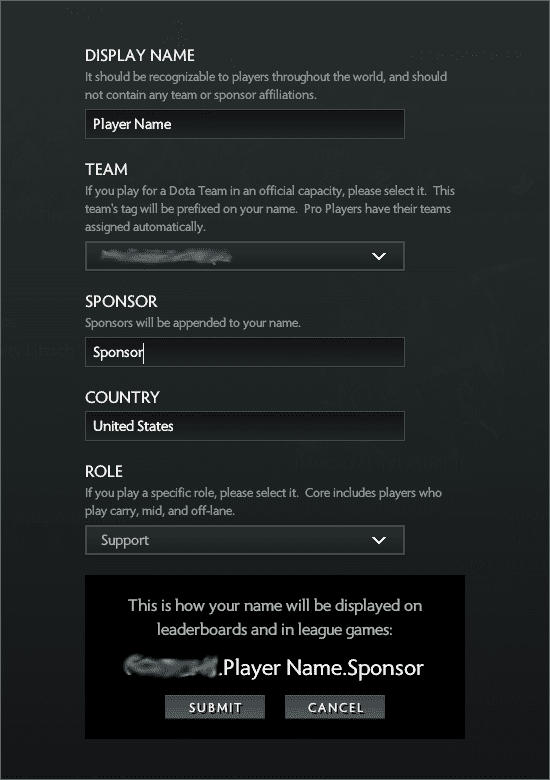
The game also weighs a lot of factors together – an “anti-smurf” feature. From Account experience, Gold Difference to Player Performance… For example, a level 20 account would factor in a little so that you would be less likely to face a level 100 account.
Furthermore, the system does not actively try to achieve anything specifically for players. The only thing it tries to enforce is the percentage of winning for both teams – each team must have a 50% chance of beating the other. This means that unless you are one of the top tier players, your win/loss ratio would gradually decrease to 50%. Win rate, win count and win streak do not affect the matchmaking system.
This concludes our article about Dota 2 rank MMR. Interested in more articles related to Dota 2? Please check out this list for the best Indian Dota 2 players.

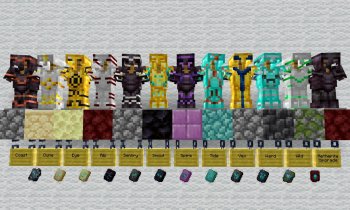








Comments